If you’re trying to clean up your diet, one of the first pieces of advice you’ll probably come across is to load up your plate with more fruits and vegetables.
Something not everybody realizes about fruit, however, is that certain fruits contain a lot of sugar.
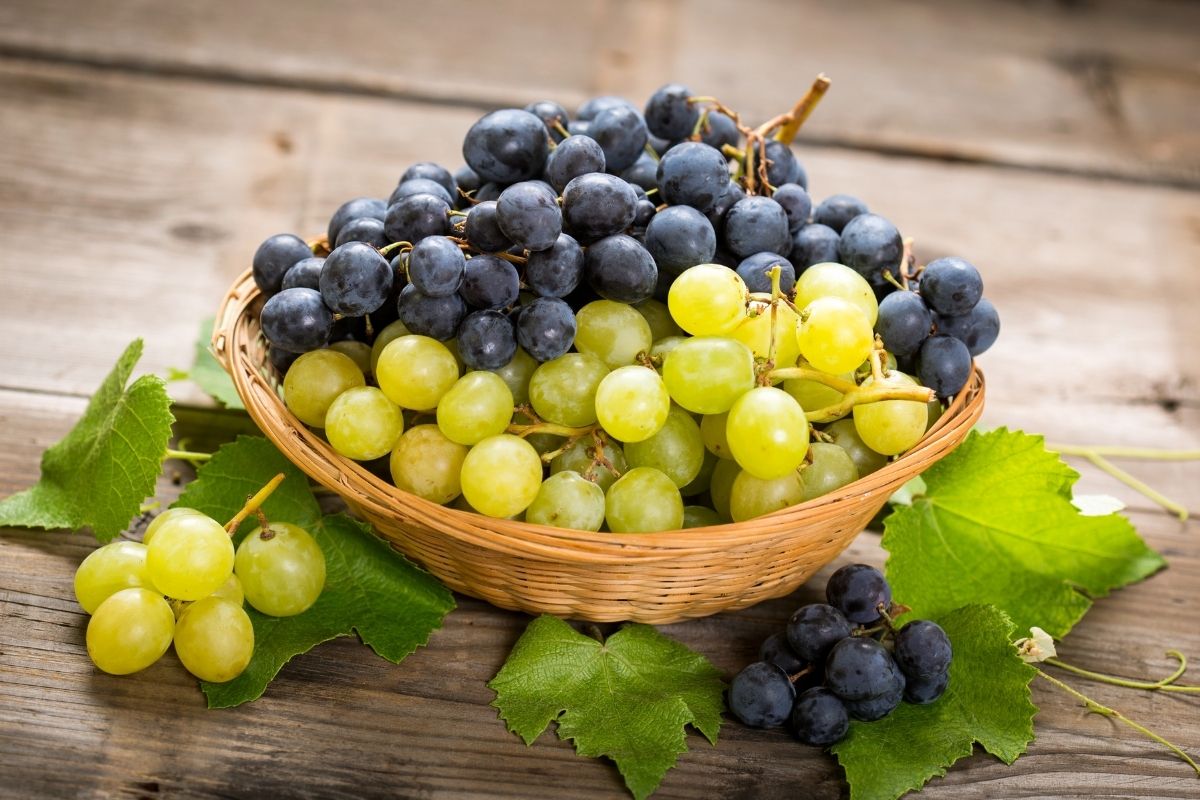
Now, unless you have a medical condition that makes consuming high-sugar foods dangerous for you, the high sugar content of some fruits isn’t a bad thing!
In fact, eating fruits with high sugar can be a great way to boost your energy levels throughout the day.
Bearing that in mind, let’s take a look at 15 delicious high-sugar fruits for you to enjoy!
1. Passion Fruit (Passiflora Edulis)
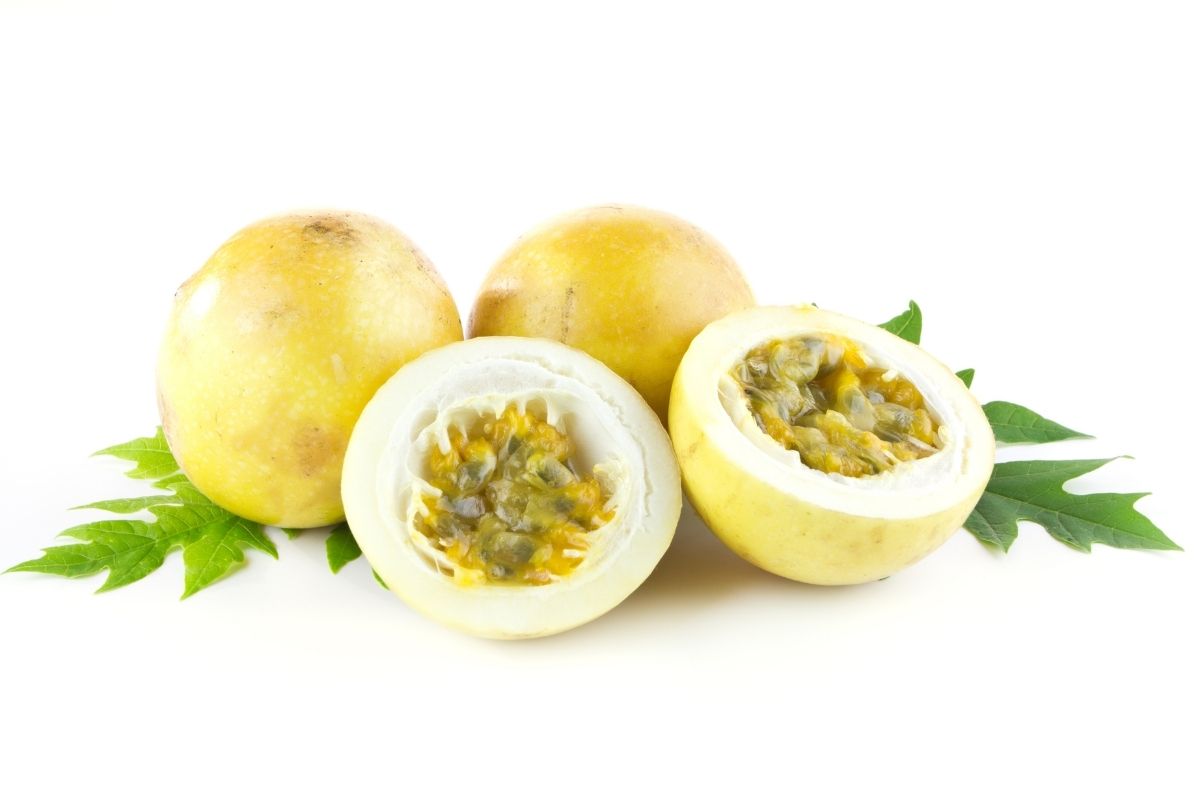
Passion Fruit tastes incredibly sweet, so it makes sense that this fruit is one of the highest in sugar.
For every 100 grams of passion fruit, you’ll take in 11 grams of sugar. This is by no means the highest sugar level of all fruits, but it’s still pretty high compared to others.
Despite being high in sugar, as is the case with many high-sugar fruits, passion fruit is very healthy!
These fruits actually have a low glycemic index, which means that although their sugar levels are high, they don’t cause sharp spikes in blood sugar.
RELATED: Passion For Fashion: The Ultimate Guide To Passion Flowers
2. Lychee (Litchi Chinensis)
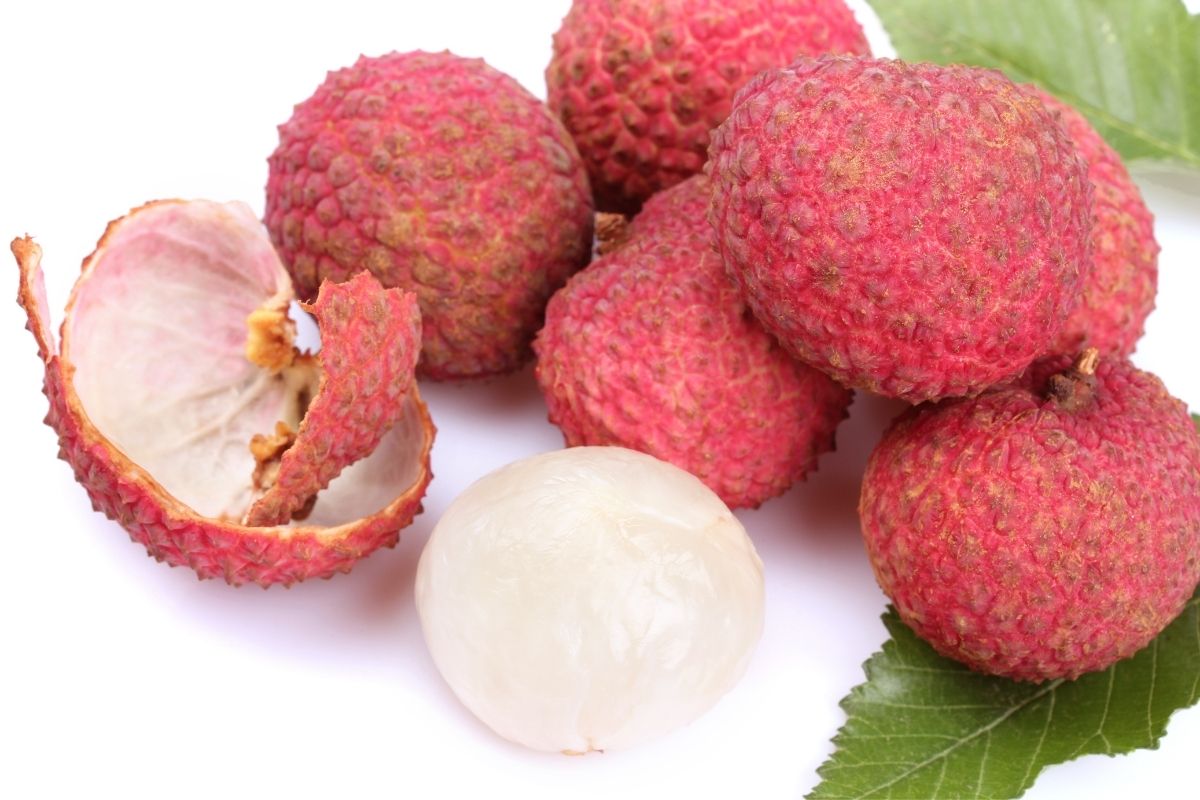
Lychees are small, round fruits with tough, bumpy shells, but just one lychee can provide a decent amount of sugar.
One hundred grams of lychees contains 15 grams of sugar, while a single fruit contains 1.5 grams.
In addition to providing you with a high-sugar snack, lychees have numerous benefits for human health, including protection against diabetes, heart disease, and certain forms of cancer.
3. Banana (Musa Acuminata)

Bananas are some of the most satisfying fruits to snack on, for many reasons.
Foremost, in the grand scheme of fruits, bananas are a high-calorie option. A fair amount of these calories are from sugar because 100 grams of banana contains 12 grams of sugar.
Your average banana weighs a little more than 100 grams, so you’ll probably get 14 grams of sugar from a whole banana.
4. Pomegranate (Punica Granatum)

Pomegranate is known by some as the fruit of life, and you’ll certainly feel more alive after a serving of his high-sugar fruit!
For every 100 grams of pomegranate you consume, you’ll be ingesting 14 grams of sugar. This makes pomegranate one of the most sugary fruits there is.
If you’re in any way concerned about the amount of sugar in your average pomegranate, rest assured that you’ll be deriving plenty of benefits from incorporating this fruit into your diet.
This includes lots of fiber and immunity-boosting vitamin C.
5. Cherry (Prunus Avium)
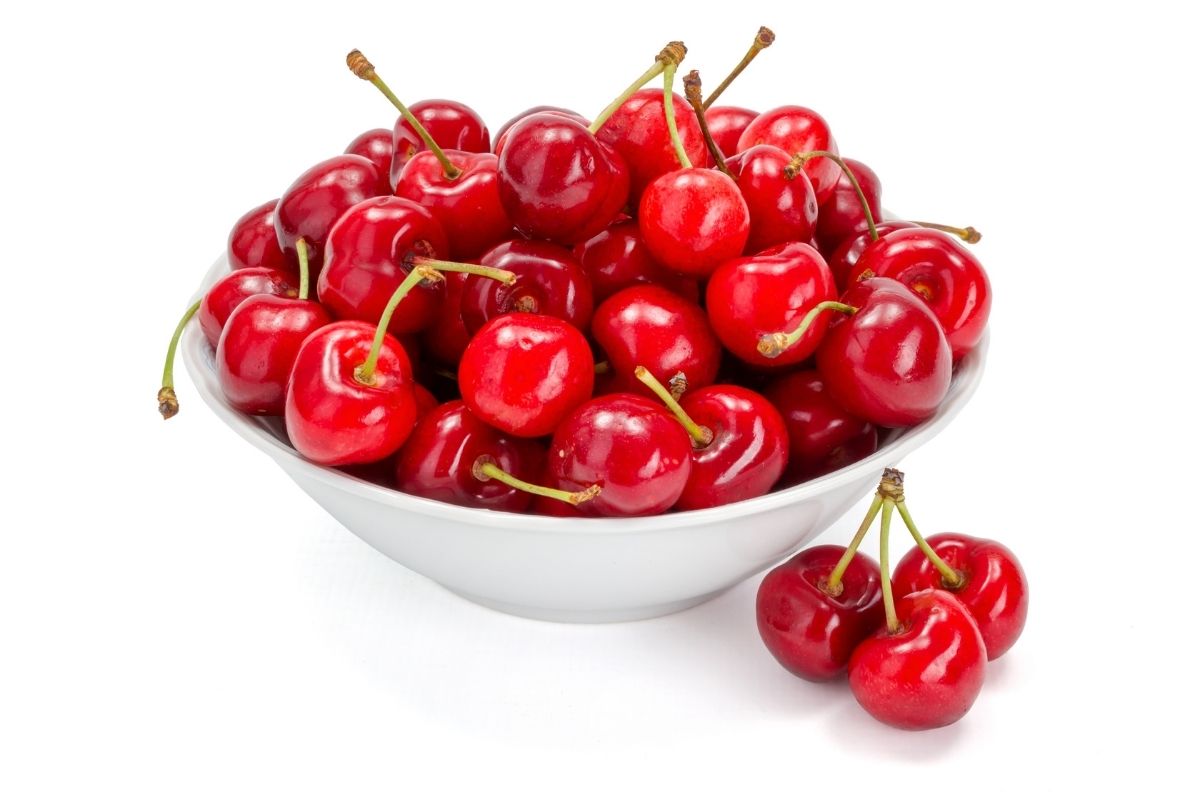
Many of us automatically associate cherries with sugar thanks to the number of desserts and sodas that feature this fruit.
However, even cherries in their natural form pack a good punch of sugar for when you need an energy boost.
While cherries don’t contain as much sugar as some other fruits (approximately 8 grams per 100 grams), the sugar content is certainly satisfying.
Plus, cherries are great sources of lots of different nutrients, from a surprising amount of protein (1.6 grams per cup) to high potassium levels.
6. Mango (Mangifera Indica)
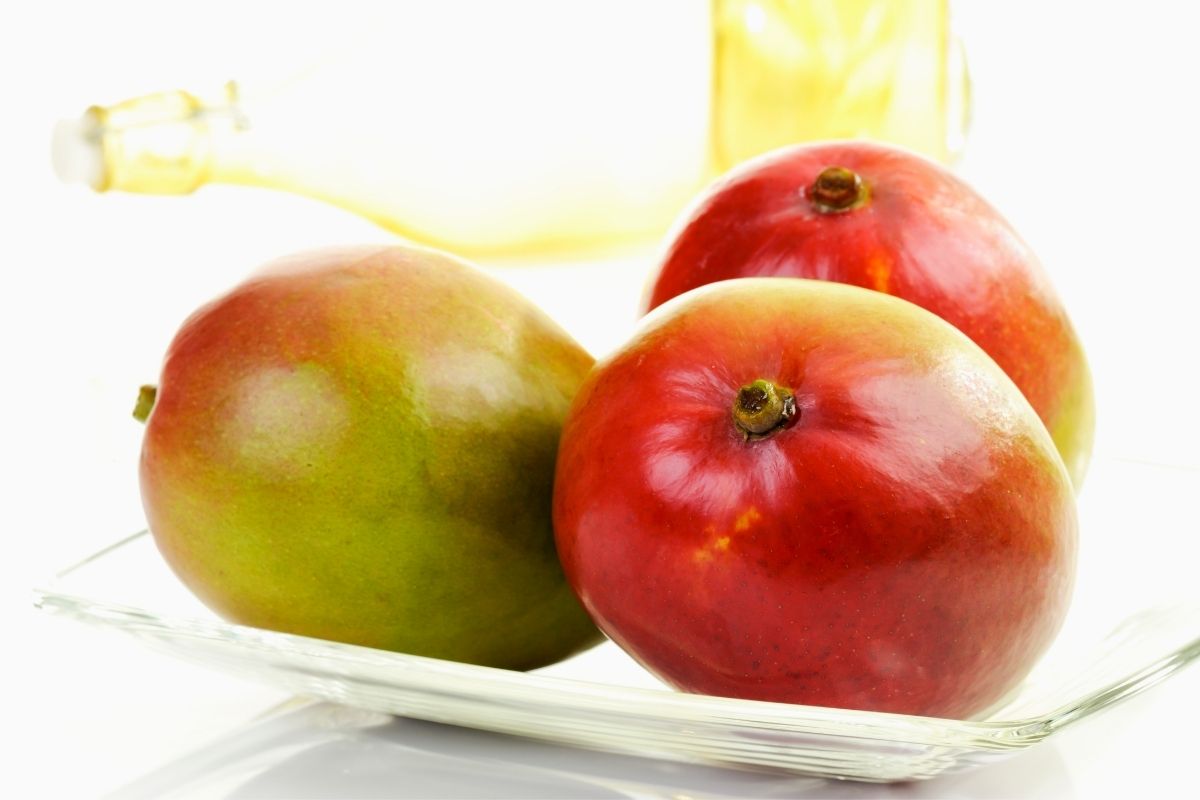
The mango is a popular tropical fruit due to its soft texture and sweet flavor when properly ripened.
Mango’s sweetness comes from its high sugar content, which amounts to 14 grams per 100-gram serving. That’s about 46 grams for a whole mango!
Additionally, eating more mango will mean that you get more of certain other nutrients like potassium and vitamin A.
7. Blueberry (Vaccinium Sect. Cyanococcus)
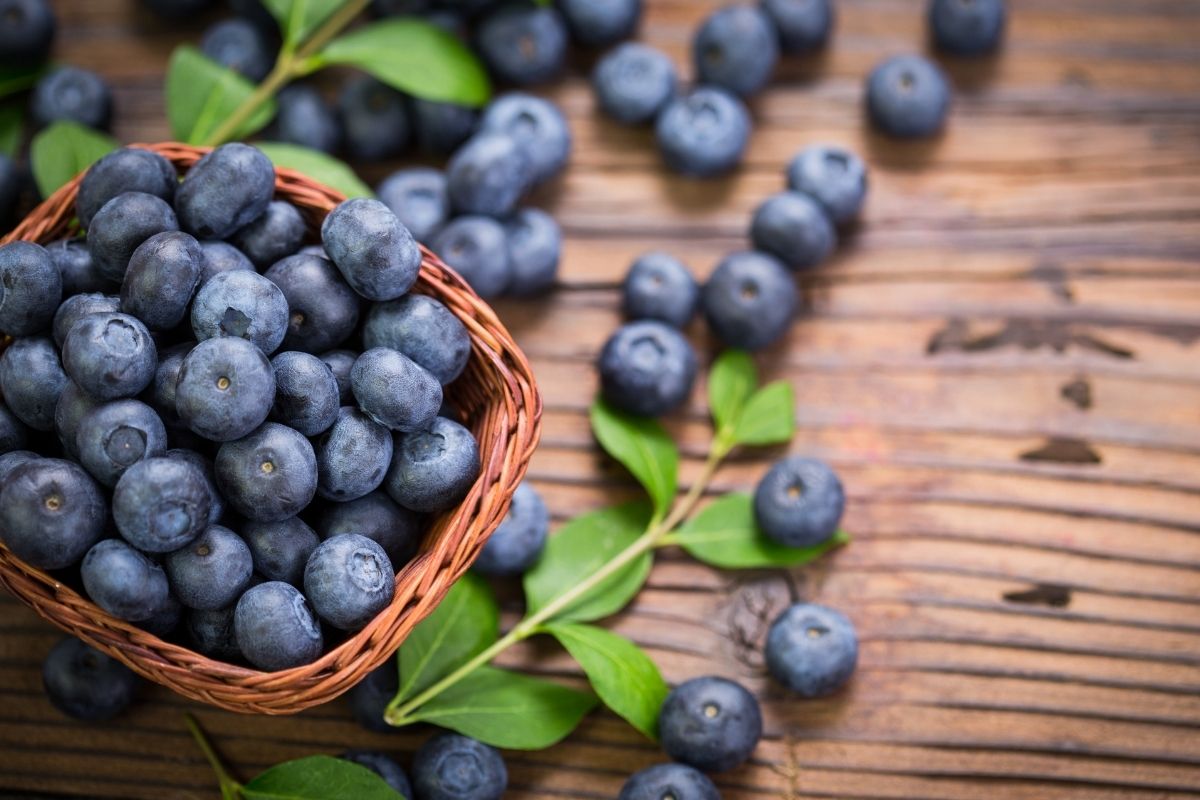
Blueberries are known for being high in antioxidants, and therefore, helping to fight off infections and other diseases. However, did you know that blueberries are also high in sugar?
For every cup of blueberries, you’ll be eating 15 grams of sugar, which isn’t necessarily sky-high, but still up there.
That’s more than other sweet berries (or berry-like) fruits you know, like strawberries and raspberries.
8. Mandarin (Citrus Reticulata)
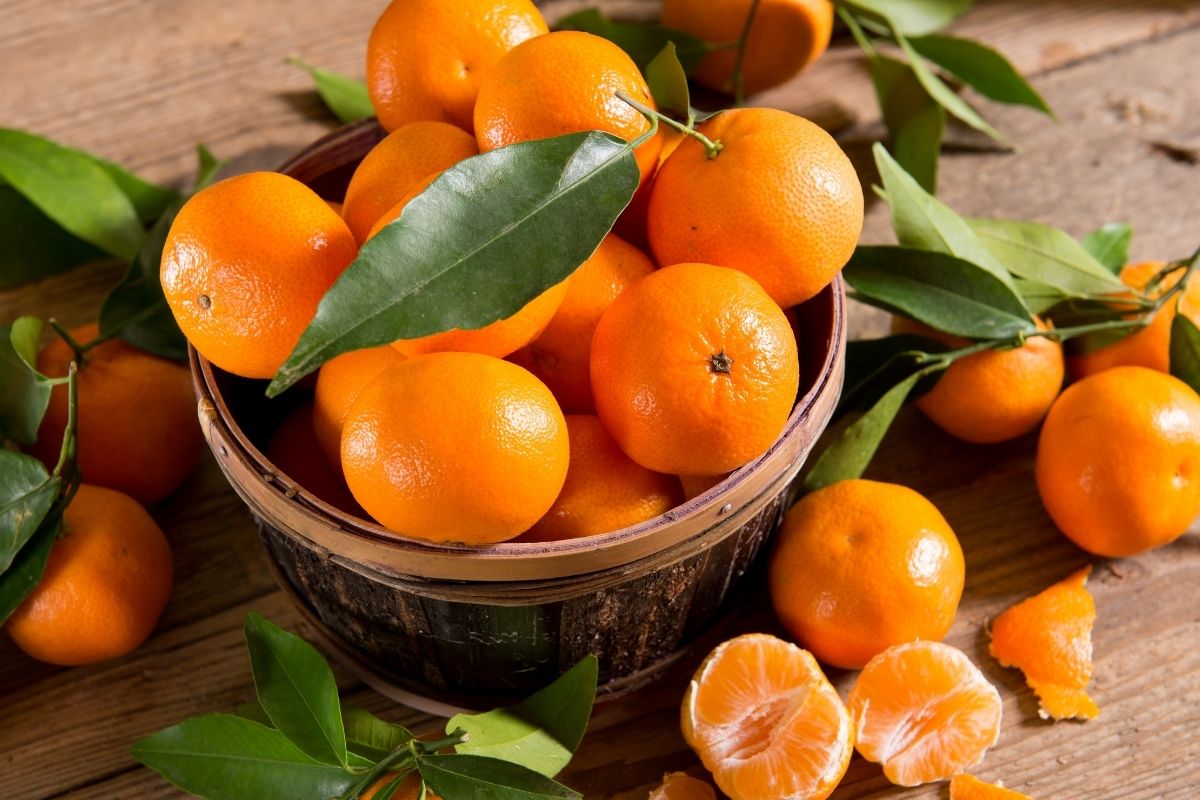
Some citrus fruits, like lemons and limes, are recognized as low-sugar options for those who like their fruit (and their vitamin C) but don’t want to impact their blood sugar levels too much.
Mandarins, on the other hand, are fairly high in sugar. One hundred grams of mandarin oranges contains 9 grams of sugar.
Again, for some, this might actually seem quite low, but compared to more sour citrus fruits like limes, which only have about 1 gram of sugar, it’s significant.
9. Pear (Pyrus Communis)
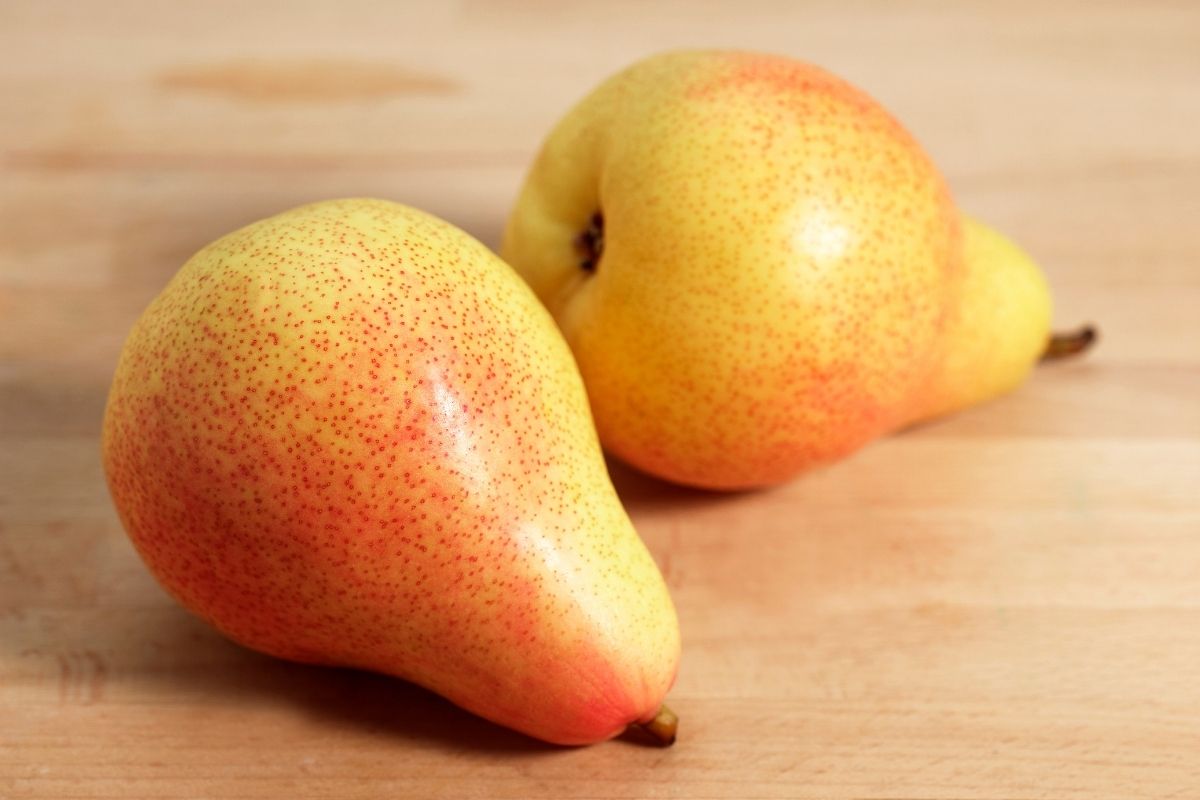
When pears are allowed to ripen optimally, they are some of the sweetest, juiciest fruits you’ll ever taste.
But why is that?
Simply put, it’s because your average pear contains approximately 15 grams of sugar. That’s over half of an adult woman’s recommended daily intake.
Not only are pears super sweet, but they’re also good for your gut, your skin, your heart, and may even help to regulate your blood sugar in the long run.
10. Nectarine (Prunus Persica Var. Nucipersica)

If you’ve ever tasted nectarine, finding it on our list of high-sugar fruits should come as no surprise. Nectarines are, after all, named after ‘nectar’, which means ‘food of the gods’.
For every 100 grams of nectarine, there are 11 grams of sugar, meaning that nectarines are over 10% sugar in total. They’re mostly water, though, so they’re also deliciously hydrating.
11. Grapes (Vitis Vinifera)

Grapes come in different varieties, of course, but in general, you can rely on a bunch of grapes to provide you with a solid portion of your daily sugar intake.
A cup of either red or green grapes contains 15 grams of sugar, which means that on average, a cup of grapes will deliver more natural sugars than the same weight in banana!
12. Apricot (Prunus Armeniaca)
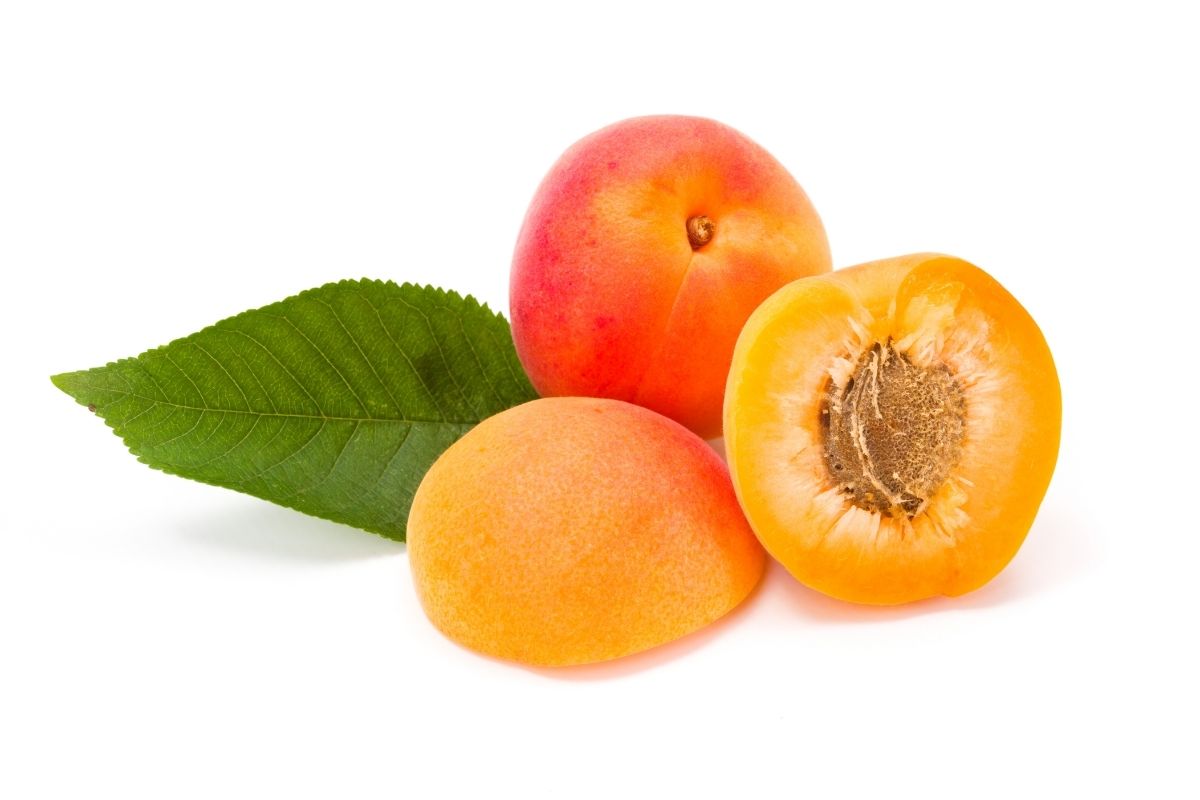
If you’re looking for an easily portable, highly beneficial, high-sugar fruit to take with you to work or school, why not try apricots?
These small, fuzzy fruits contain 3 grams of sugar each, which may not sound like a lot, but remember, apricots aren’t large fruits.
One hundred grams of apricot yields 9 grams of sugar, to put it into context, so just 4 servings of apricot would amount to an adult man’s daily sugar intake.
13. Fig (Ficus Carica)

If you know anything about figs, you probably know that these interesting-looking fruits are known for assisting the digestive system as well as regulating blood pressure and making weight loss easier for some people.
Despite their reputation as good weight-loss food, figs are high in sugar. One hundred grams of raw fig contains 16.26 grams of sugar, which makes it one of the highest sugar fruits on our list.
There is a way you can increase the sugar content of figs further, as we’ll get to in a moment…
14. Pineapple (Ananas Comosus)
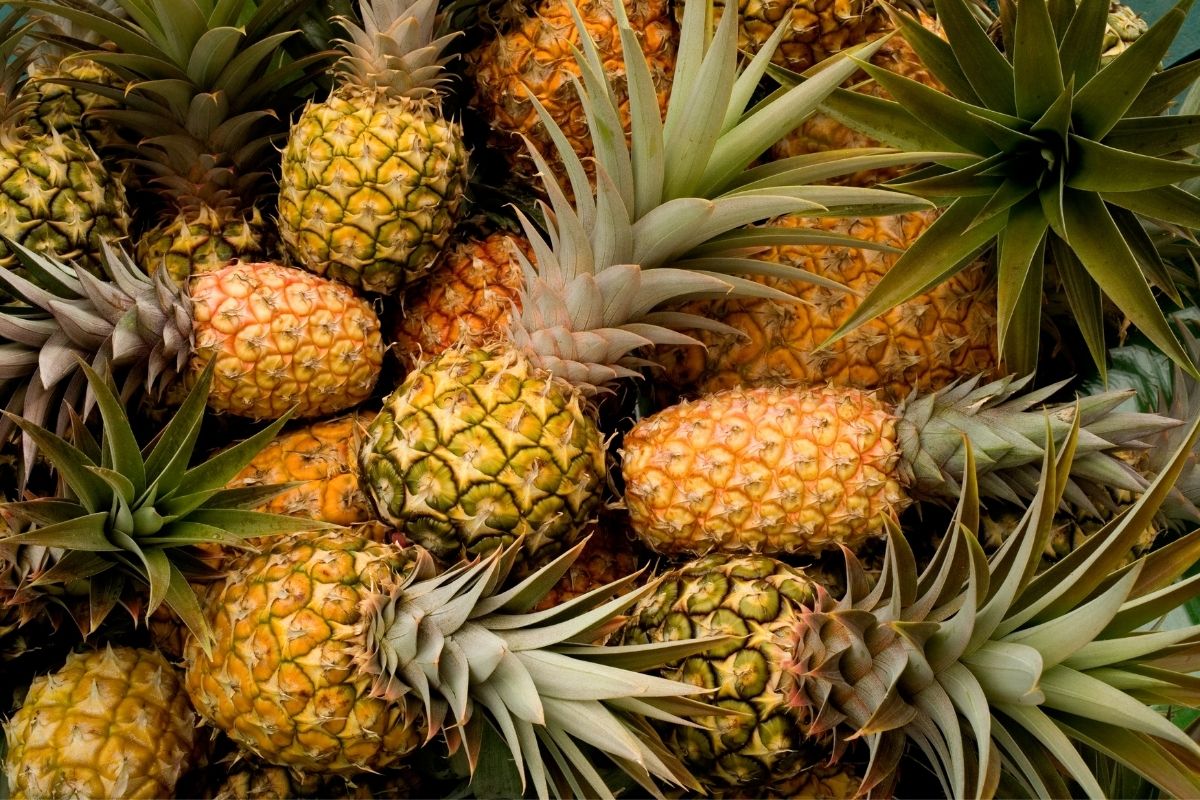
Pineapples are roughly 10% natural sugar, with 10 grams of sugar for every 100-gram serving.
Because of this, pineapple is a great choice if you’re looking for a natural way to heighten your energy levels and brain function.
Moreover, pineapples contain so many nutrients that can truly benefit you.
These include Manganese, vitamin B6, and vitamin C. Pineapple can help to protect you from specific diseases like cancer and arthritis while supporting your digestive system for improved gut health.
15. Dried Fruit
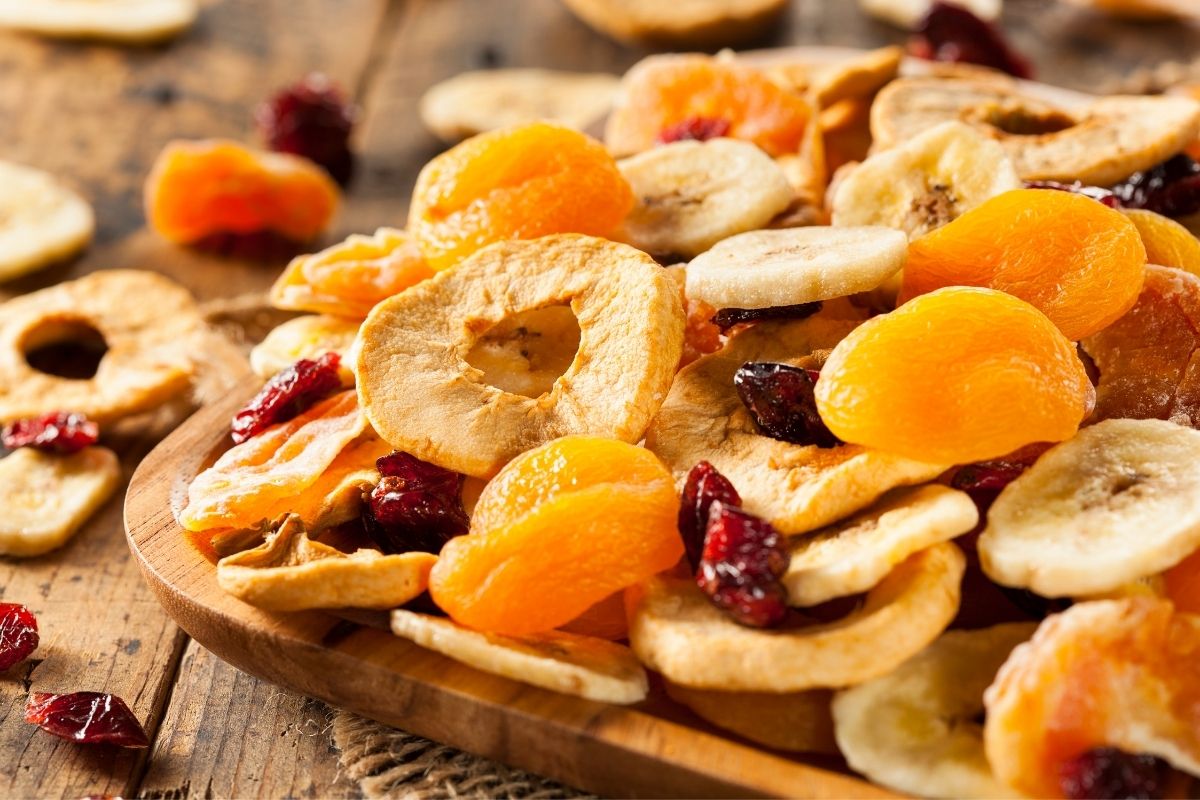
Okay, this one might not be a specific fruit species, but hear us out. If you want a bit more of a sugar boost from your 5 a day, you might consider incorporating more dried fruit into your diet.
Dried fruits are almost always higher in sugar than their raw, undried counterparts. On average, the glycemic index of dried fruit will also be lower.
Why is this, you ask?
Basically, it’s because drying the fruit makes sure that almost all the water content is removed. This has the effect of concentrating the sugar levels in the fruit, so the dried product is much sweeter.
As dried fruits get higher in sugar, they also get higher in calories.
This might not be ideal if you’re making an active effort to lose weight, but if you want your fruit to make for a more fulfilling, sweet-tooth-pleasing snack, dried fruit is the way to go.
Let’s take the example of figs. Figs, as we stated earlier, contain over 16 grams of sugar per 100 grams.
That’s already very high. Dried figs, however, contain almost 3 times as much sugar (47.92 grams per 100 grams).
Similarly, the calorie content of dried figs is elevated (249 calories compared to 74).
Final Thoughts
You won’t struggle to find fruits that are high in sugar. After all, natural sugars are a large part of the average fruit’s overall calorie and carbohydrate content.
By eating dried fruits, you’ll be sacrificing the hydrating benefits of your chosen snack, but you’ll also probably feel more energized and functional due to the higher sugar content.
If you’re worried about consuming too much sugar in the form of fruit, just remember that it’s much better to get your daily sugar intake through natural sugars than processed sweets.
Hope you enjoyed reading this article, make sure to also check out our other articles:
13 Different Fruits That Start With V (Including Photos)







